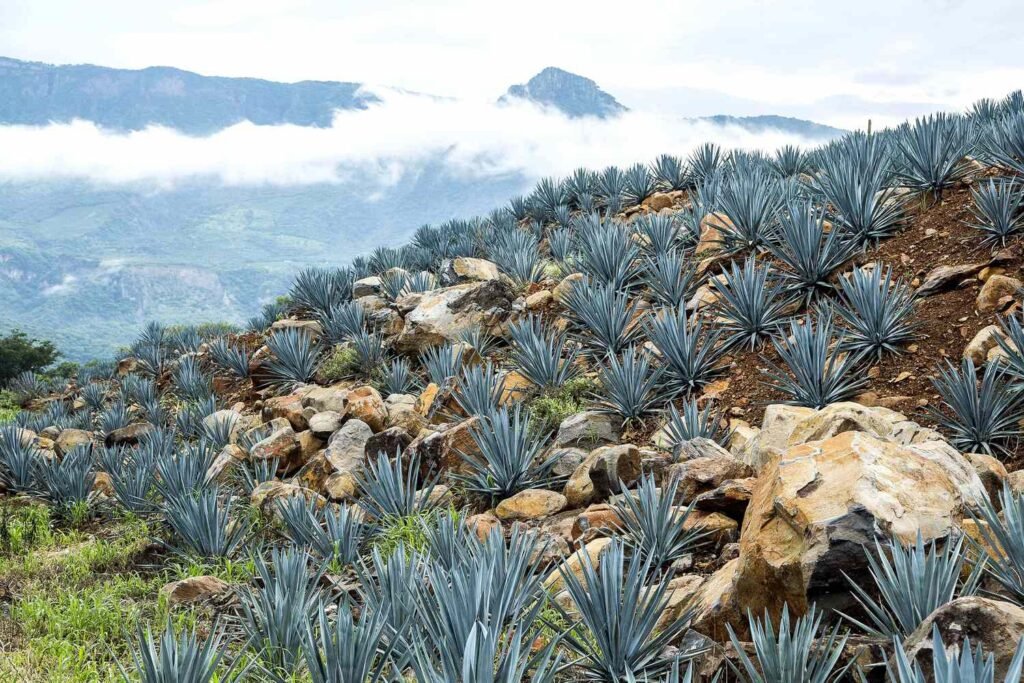Tequila is a beloved spirit that has gained popularity worldwide for its unique flavors and versatility in cocktails. At the heart of every bottle of tequila is the Blue Weber species of agave, a plant that takes years to mature before it can be turned into the delicious spirit. Similar to wine, the environment in which the agave is grown plays a significant role in shaping the flavor profile of the tequila.
The majority of tequila production takes place in the Mexican state of Jalisco, which is divided into two key regions: the highlands (Los Altos) and the Tequila Valley (El Valle), often referred to as the lowlands. Despite being relatively close in proximity, these regions differ in elevation, soil composition, and climate, all of which contribute to the unique characteristics of the tequilas produced there.
Understanding the distinctions between highland and lowland tequilas can help consumers make informed choices based on their preferences. Tasting tequilas from both regions side by side can expand one’s palate, deepen appreciation for the diverse flavors of tequila, and provide a deeper understanding of the differences between the two.
One of the most notable differences between the highlands and lowlands is the soil type. The mineral content in the soil varies significantly between the regions, with each region’s soil visibly different. The soil composition affects how the agave plants grow and ultimately influences the flavors of the finished tequila. For example, highland soil is mineral-rich with high iron and clay content, resulting in a beautiful red, orange, or rust-colored earth. In contrast, the lowlands feature volcanic soil with higher pH levels due to a volcanic eruption thousands of years ago.
Climate and elevation also play a crucial role in shaping the flavor profiles of highland and lowland tequilas. Both regions experience a semi-dry, temperate climate, but differences in temperature and precipitation create unique microclimates. The cold nights and temperature fluctuations in the highlands stress the agave plants, leading to a higher sugar concentration and sweeter flavor notes. In comparison, the lowlands tend to produce tequilas with a more mineral-driven and savory profile.
While there are general flavor profiles associated with highland and lowland tequilas, it’s essential to note that these are guidelines rather than strict rules. Some distilleries may blend agaves from both regions or exhibit characteristics of one region while being physically located in another. Ultimately, exploring tequilas from both highlands and lowlands can provide a rich and diverse tasting experience, allowing consumers to appreciate the complexities and nuances of this beloved spirit. The Benefits of Mindfulness Meditation
Mindfulness meditation has gained popularity in recent years as a way to reduce stress, improve mental clarity, and increase overall well-being. This ancient practice involves focusing on the present moment and cultivating a sense of awareness and acceptance of one’s thoughts, feelings, and surroundings.
One of the key benefits of mindfulness meditation is its ability to reduce stress and anxiety. By bringing attention to the present moment, individuals are able to let go of worries about the past or future, which can help alleviate feelings of overwhelm and tension. Studies have shown that regular mindfulness meditation can reduce levels of cortisol, the stress hormone, in the body, leading to a greater sense of calm and relaxation.
In addition to reducing stress, mindfulness meditation can also improve mental clarity and focus. By practicing mindfulness, individuals learn to cultivate a non-judgmental awareness of their thoughts and emotions, allowing them to better understand their own thought patterns and reactions. This increased self-awareness can lead to greater emotional intelligence and the ability to respond to challenging situations with more clarity and composure.
Furthermore, mindfulness meditation has been shown to have a positive impact on physical health. Research has found that regular meditation practice can lower blood pressure, improve immune function, and reduce inflammation in the body. In addition, mindfulness has been linked to improved sleep quality and a reduced risk of chronic diseases such as heart disease and diabetes.
Another benefit of mindfulness meditation is its ability to enhance relationships and communication. By developing a greater sense of empathy and compassion through mindfulness practice, individuals can improve their communication skills and deepen their connections with others. Mindfulness can also help individuals become more present in their interactions, leading to more meaningful and authentic relationships.
Overall, the benefits of mindfulness meditation are numerous and far-reaching. From reducing stress and anxiety to improving mental clarity and physical health, mindfulness can have a profound impact on one’s overall well-being. By incorporating mindfulness meditation into your daily routine, you can experience greater peace, clarity, and connection in your life.


